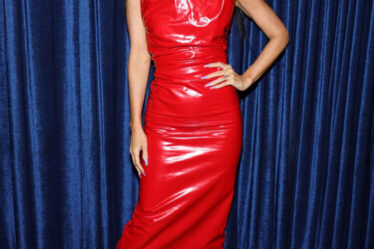
Power-dressing for the polls is a way of reclaiming space in the election process. Memorably, in 2016, women wore white, suffragette-inspired pantsuits in sartorial solidarity with Hillary Clinton. Four years later, the move was replicated (though less ubiquitously) with hot pink suits. Like democracy, fashion is inextricably tied to capitalism. But I firmly believe that serving a look can be a potent political act.
That said, there are rules about what you can and can’t wear while voting. In many states, campaigning is banned within a certain radius of each polling place. And in 10 states—including California, Delaware, Kansas, Montana, New Jersey, New York, South Carolina, Tennessee, Texas, and Vermont—electioneering laws specifically forbid voters from sporting clothing and accessories that allude to a certain candidate, party, or ballot box issue. Depending on where you live, those restrictions could extend to buttons, banners, hats, pens, pins, and stickers as well.
You can be charged with a misdemeanor in Michigan for wearing political garb within 100 feet of polling sites. But that isn’t the case in every state. Iowa’s policy permits political clothing so long as voters immediately leave the premises after casting their ballot. Elsewhere, in Maine, it’s perfectly fine to wear buttons that are 3 inches or smaller in size. Check this state-by-state guide to electioneering laws to make sure your ‘fit is legally in the green.
In most cases, you won’t be prosecuted for violating political clothing protocol. Instead, you’ll be asked to take the item off, cover the offending shirt with a jacket or sweatshirt, or turn your clothing inside out. But the worst scenario could result in being asked to leave before you have the chance to vote. And in at least one instance, an Election Day dress code violation led to a legal battle that eventually reached the Supreme Court. After a conservative Minnesota voter was sent home for sporting a shirt emblazoned with a Tea Party Patriots logo and slogan in addition to a “Please ID Me” pin during the 2017 election, the Supreme Court deemed Minnesota’s policy too vague. Issuing an opinion on the ruling, Chief Justice John Roberts wrote: “[Casting a vote] is a time for choosing, not campaigning. The state may reasonably decide that the interior of the polling place should reflect that distinction.”
Minnesota subsequently rewrote its prohibition policy on political attire and messaging, more explicitly stating that “you cannot display campaign T-shirts, buttons, or literature which relate to specific candidates, official political parties, or ballot questions on the ballot that day.”



